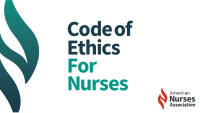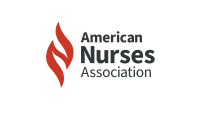Barbara Nichols is inducted into the ANA Hall of Fame.


Barbara L. Nichols, MSN, RN, DSNc (Hon), FAAN, is known for her visionary leadership and political acumen. After 20 years as a direct care nurse, Nichols spent the next 43 years in leadership and policymaking positions in professional associations and healthcare organizations. Nichols was the first Black person elected as American Nurses Association (ANA) President, serving from 1978 to 1982. Before that, she was the first Black president of the Wisconsin Nurses Association, where she forged a relationship with the Wisconsin Medical Society that resulted in establishing a Joint Practice Committee. Later, as secretary of the Wisconsin Department of Regulation and Licensing, she collaborated to create changes to Wisconsin’s Nurse Practice Act. Nichols has received numerous honors and awards, published more than 200 manuscripts on nursing and healthcare, and advocated for diversity in nursing.
How do you believe your achievements have made an impact on nursing?
As ANA president, I leveraged my approachability and strong interpersonal skills to gain entrée to power brokers, where I advanced the role of nursing. I developed good working relationships with the American Medical Association and the American Hospital Association—historically, the relationships had been antagonistic—and we collaborated around nursing education, practice, and research. I helped differentiate the roles of clinical nurse specialist, nurse practitioner, and physician’s assistant, which were emerging in the 1970s. I also promoted the scholarliness of nurses and encouraged nurses—rather than sociologists or psychologists—to do their own research. During the 1970s, debates ensued over whether to call nursing a profession and whether nurses should pursue higher education. You could look at what was happening in nursing in the 1970s as a landscape of the things I was working on.
Having broken barriers as the “first” in many roles, what advice do you have for up-and-coming nurse leaders from diverse backgrounds?
I ran for ANA president because no African American had done so and felt I would be competent. During my career, I have communicated that women of color can strive for and attain top positions. Still, they must keep in mind that even though ANA is phenomenally committed to making its leaders successful, they must do their part to ensure they are competent and knowledgeable and excel at their job.
What are your thoughts as ANA embarks on a journey of racial reckoning?
In the past, people of color were rarely in nursing leadership positions, even those with higher education. In the 21st century, going back and looking at our history gives us the chance to acknowledge and correct problems that occurred in the 20th century, so we can redefine and rethink our role in the future.
What has been most rewarding or memorable about your career?
Being supported in terms of my own authenticity, style, and approach. As ANA president, I tried different things and developed my interpersonal and collaborative skills. I found it rewarding to dialogue about health issues with key executives and influencers (including former U.S. President Jimmy Carter and First Lady Rosalind Carter) at international, national, and state levels. I also enjoyed participating in deliberations over sticky issues, such as the role of collective bargaining in nursing, a controversial topic during my time as president. I plan to write about the significance of collective bargaining in nursing—it’s a power issue, a women’s issue, a nursing issue, and a leadership issue—all of those things.
— Interview by Katherine O’Brien, a professional writer on health, nursing, and aging.


















